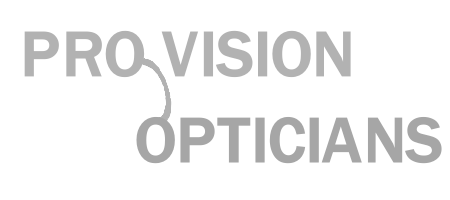Dry Eyes
Do you have ‘dry eyes’?
If your eyes feel tired, sore or gritty, you may have ‘dry eyes’. ‘Dry eyes’ occur when there are not enough tears to keep your eyes lubricated. Normally eyes are covered with a thin invisible film of tears. Tears are the lubricating ‘oil’ of the eye surface. If there are not enough tears, or if the tears do not spread properly across the eyes, the eyes become dry and sore.
They may feel ‘scratchy’ or gritty’, as though there is something in them. They may also be a little itchy, and they may be red. Poorly spreading tears may also be caused by ‘blepharitis’ (inflammation of the eyelids): see our leaflet on Blepharitis.
Sometimes your eyes may ‘water’; there may be enough tears, but the tears do not spread properly. The poor spreading makes the eyes sore, and this makes them water.
Having a dry eye does not damage your eye (unless the eye is extremely dry: see overleaf). Your sight may be slightly blurred, but will not be permanently affected.
Where are tears made normally?
Tears are made in a gland near the eyeball, and spread over the front of the eyeball, into tear ducts, and then into the nose.
The main cause of dry eyes is the drying up of the lacrimal gland. Anyone can develop dry eye, but it is more common in women, diabetes, and the over-45s. Usually the gland still produces tears, but not quite enough. Once damaged, the gland does not generally recover, but tear production can vary.
The gland may also be damaged by the body’s immune system. The immune system is meant to fight infections (‘germs’), but sometimes it becomes over-active. Whilst the immune system may damage the lacrimal gland, it does not damage the eye itself (see ‘Very dry eyes’).
What makes your dry eyes more Uncomfortable?
Your eyes may feel more sore in the wind, or any dry hot atmosphere. Contact lenses, or any thing that reduces blinking may make ‘dry eyes’ more uncomfortable, such as watching TV or a computer screen, or sewing.
There are fewer tears at night, so the eye may be sore and a little sticky in the morning. Disease of the eyelids stops the tears spreading properly, and makes the eyes sore. This is ‘blepharitis’: see the Blepharitis leaflet in this series. Some medicines reduce the amount of tears, such as tablets for depression and high blood pressure (eg water tablets).
Very dry eyes
This is a more serious condition, and a specialist should give you specific advice. The eye is prone to develop ulcers and infections. In addition to the treatment above (including frequent preservative-free drops and gel tears), the tear drainage ducts can be blocked with plugs (temporary) or cauterised to seal them (permanent). This saves the tears draining away, and makes the eyes a little more comfortable. Very dry eyes, especially if the mouth is dry as well, may be part of ‘Sjogrens’ sydrome: a dry mouth can lead to tooth decay. Sjogrens patients may also have joint problems.
What is the treatment of dry eyes?
To make your eyes comfortable you need to replenish the natural tear film that protects the surface of your eyes. There is no magic ‘cure’. Four types of products are available, and all are harmless: they do not contain any drugs, merely ‘oiling’ the surface of the eye.
Try the different products out. Your doctor can prescribe the products, and they can also be bought at pharmacies without a prescription. Some examples are listed next:
1 Tear drop preparations—in bottles
These are simple salt solutions with added ingredients that help them spread across the eye. They make the eye more comfortable by lubricating the surface, but the effect does not last all that long.
There are many types: different drops may suit different eyes,
so try different types. They are not very effective over night, and the eyes may be uncomfortable when you wake up. They also contain preservatives: this is only a problem if you have very dry eyes when the drops would need to be used quite frequently, and the dose of preservatives increases. Examples include ‘Liquifilm’, ‘Tears naturale’ and ‘Hypromellose’.
2 Eye gel preparations
These are relatively new products, and are the most useful. They last longer than drops, do not cause as much misty vision as ointments, and can be used at bedtime as they last partly through the night. Clinitas Hydrate and Celluvisc are examples.
3 Eye ointments
These products are much thicker and greasier than eye drops. They stay in the eye much longer; try using them last thing at night. During the day they may cause misty vision. An example is Hycosan Night
4 Tear drop preparations—without preservatives
These are particularly useful for people with very dry eyes. Because they have no preservative they can be used more often, upto every halfhour, without damaging your eyes. One example is ‘Minims’ tears: the ampoules (mini-bottles) contain about 14 drops, and may last a day with practice. They are moderately expensive. We recommend Blink Intensive Eye Drops.
preservative free bottles are now commonly used like the Hycosan range which stay sterile for 6 months after opening
5 Eye drops which act like a gel
SYSTANE® Lubricant Eye Drops contain a unique gelling and lubricating polymer system formulated to adjust to each patient's individual
tear film pH. This ensures optimum properties for each user and provides enhanced relief on a patient-to-patient basis.
It is like eyedrops but once on the eye SYSTANE® behaves more like a gel mimicking the tear film more closely.
Summary of dry eye treatment
slightly dry eyes: drops in bottles or gels
moderately dry:gels (gel tears or viscotears)
severely dry: gels, ointments, occlude tear ducts (minor surgery), ‘Minims’ artificial tears
